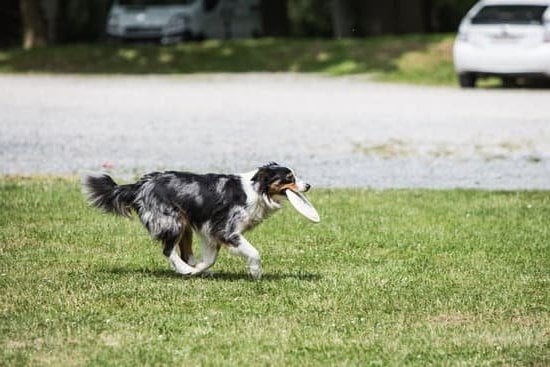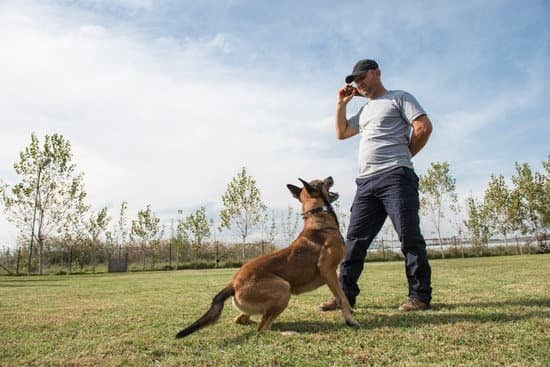Dog obedience training is a crucial aspect of owning a dog and is beneficial for both furry friends and their owners. It goes beyond teaching basic commands like sit and stay; it enhances communication, strengthens the bond between dog and owner, and promotes a well-behaved and happy pet. Understanding when to start dog obedience training is essential to ensure the most productive learning experience for your four-legged companion.
Dog obedience training provides numerous benefits for both dogs and their human counterparts. Not only does it teach dogs how to behave properly, but it also improves communication between them and their owners. By learning commands and cues, dogs can effectively communicate their needs while understanding boundaries set by their owners. This enhanced understanding leads to a stronger bond built on trust, respect, and clear channels of communication.
Furthermore, investing time in dog obedience training contributes to the overall happiness of both dogs and owners. Well-trained dogs have fewer behavioral issues, leading to reduced stress levels for both parties involved. Additionally, training engages a dog’s mind through mental stimulation, providing an outlet for energy that may otherwise manifest as destructive behavior.
Understanding the Developmental Stages of Dogs
Dogs, like humans, go through unique stages of development as they grow from puppies into adulthood. It is important for dog owners to understand these stages in order to provide appropriate training and guidance throughout their pet’s life. By recognizing these developmental milestones, owners can better identify when their dog is ready for obedience training and tailor their approach accordingly.
The first stage in a dog’s development is puppyhood, which lasts from birth until around 12 weeks of age. During this time, puppies are highly impressionable and start learning social skills from their mother and littermates. It is crucial for owners to expose their puppies to different sights, sounds, people, and animals during this period to promote healthy socialization.
Between 3 months and 6 months old, dogs enter adolescence. This stage is often characterized by increased independence and curiosity. However, it can also be challenging as dogs may test boundaries and exhibit behavioral issues such as selective hearing or selective memory. Consistent training during this stage is essential to reinforce good behavior and prevent bad habits from forming.
Finally, dogs reach adulthood at around 1 year old (sometimes earlier for smaller breeds). At this stage, the dog has gone through all major growth spurts and has a more stable temperament. Obedience training at this point can be highly effective as adult dogs have longer attention spans and are better able to grasp new commands.
| Development Stage | Age Range | Main Characteristics |
|---|---|---|
| Puppyhood | Birth – 12 weeks | Impressionable, learning social skills from mother and littermates |
| Adolescence | 3 months – 6 months | Increased independence, curiosity, potential behavioral challenges |
| Adulthood | Around 1 year (varies by breed) | Matured temperament, longer attention span, better grasp of commands |
By taking into account the developmental stages of dogs, owners can ensure they are providing appropriate training at each phase of their pet’s life. Tailoring training methods to match a dog’s specific stage allows for more effective and successful obedience training outcomes.
Early Socialization
Socialization plays a crucial role in a dog’s life, serving as the foundation for successful obedience training. Dogs that are properly socialized from an early age tend to be more confident, well-behaved, and adaptable to various environments and situations. In this section, we will delve deeper into the importance of early socialization and provide tips on how to socialize a dog effectively.
The Critical Role of Socialization
During their early developmental stages, puppies go through a sensitive period known as the “socialization window.” This is when they are most receptive to new experiences, people, animals, and environments. It is essential during this time to expose them to as many positive experiences as possible while ensuring their safety and well-being.
Properly socializing your dog helps prevent fearfulness or aggression towards unfamiliar people or other animals later in life. It also lays the foundation for them to become comfortable with various everyday stimuli such as loud noises, car rides, and different surfaces. A well-socialized dog is generally more confident, happier, and better equipped to handle new situations throughout their lives.
Effective Socialization Techniques
To socialize your dog effectively:
- Gradual Exposure: Introduce your puppy or younger dog gradually to new people, animals (of different sizes and breeds), environments, sounds, sights, and smells. Start with controlled settings such as supervised playdates or puppy classes before advancing to busier places.
- Positive Reinforcement: Ensure that all interactions during socialization are positive ones. Use treats, praise, toys, or affection when your dog responds appropriately in new situations.
- Consistency: Expose your dog regularly to various stimuli during their developmental stages to reinforce positive associations. Daily short sessions can be more beneficial than sporadic longer ones.
- Controlled Environment: Provide a safe environment where you can control interactions and minimize potential negative experiences. Gradually increase the level of difficulty as your dog becomes more comfortable and confident.
Remember, socialization is an ongoing process that continues beyond puppyhood. By prioritizing early socialization, you are setting the stage for a positive obedience training experience and fostering a well-behaved and happy canine companion.
Recognizing Readiness
One of the crucial aspects of dog obedience training is determining when your furry friend is ready to begin their training journey. While there isn’t a specific age or timeframe that applies to all dogs universally, there are certain signs that indicate your dog may be prepared for obedience training. By observing and understanding these signs, you can ensure that you start their training at the right time.
One important indicator that suggests your dog is ready for obedience training is their level of focus and attention. Dogs who are able to maintain focus for short periods and respond to basic commands like “sit” or “stay” have a good foundation for obedience training. Additionally, if your dog shows interest in learning new things and demonstrates an eagerness to please you, it’s a strong signal that they are ready for more advanced training.
Another sign of readiness is the ability to control impulses. Dogs who can exhibit self-control when faced with distractions or temptations are likely prepared for obedience training. For example, if your dog can resist jumping up on people or pulling on the leash during walks, it shows they have some impulse control skills already in place.
Lastly, it’s important to consider your dog’s physical and mental health before starting obedience training. If your dog has any health issues or injuries that may hinder their ability to participate in physical activities involved in training, it’s best to wait until they have fully recovered before beginning their training.
Recognizing these signs of readiness will set both you and your pup up for success as you embark on the obedience training journey together. Remember that each dog is unique, so it’s essential to assess their individual temperament, disposition, and abilities when deciding if they’re ready for obedience training.
Situating the Perfect Age to Begin Obedience Training
Many dog owners find themselves wondering when the ideal time is to start obedience training for their furry friends. While there is some debate surrounding this topic, it is generally agreed upon by experts that early training can have numerous benefits for both dogs and their owners.
One school of thought suggests that the earlier you start training your dog, the better. By beginning obedience training at a young age, puppies can develop good behavior habits early on and establish a solid foundation for their future learning. During their early developmental stages, puppies are like sponges, eagerly absorbing information and eager to please. This makes it an opportune time to introduce them to basic commands such as sit, stay, and come.
Another perspective argues that waiting until a certain age, usually around six months old, allows the puppy to mature physically and mentally before starting obedience training. Advocates of this approach believe that starting too early may overwhelm young puppies or hinder their natural development. Waiting until they are slightly older allows them to gain more control over their bladder and bowel movements, making potty training easier.
Ultimately, the decision of when to start obedience training should be based on individual factors such as breed, temperament, and overall readiness. It’s important to consider your dog’s specific needs and consult with a veterinarian or professional trainer if you’re unsure about the right timing for your pet.
When you do decide it’s time to begin obedience training with your dog, there are various techniques and methods available. Positive reinforcement is often considered one of the most effective approaches since it encourages desired behaviors through rewards such as treats or praise. Clicker training is another popular method that uses a distinct sound from a handheld device to mark desired behaviors.
Regardless of when you start obedience training or which method you choose, consistency is key throughout the process. Patience and positive reinforcement will go a long way in helping your dog learn effectively.
As with any type of training, it’s important to set achievable goals and break down the process into manageable steps. By creating a structured training plan and seeking professional help when needed, you can ensure your dog receives the guidance they need to become a well-behaved and happy canine companion.
Starting Dog Obedience Training
Exploring Different Training Techniques
When it comes to dog obedience training, there is no one-size-fits-all approach. Different dogs respond better to certain training techniques and methods, so it’s important to explore the options and find what works best for your canine companion. Here are some popular training techniques and methods that you can consider:
- Positive Reinforcement: This approach focuses on rewarding desired behaviors with treats, praise, or playtime. By associating obedience commands with positive experiences, dogs are motivated to repeat those behaviors. Positive reinforcement builds trust and strengthens the bond between you and your dog.
- Clicker Training: Clicker training involves using a clicking sound to mark the exact moment your dog performs a desired behavior, followed by a reward. The clicker serves as a precise signal that communicates to your dog that they have done something right. The key is timing – the click must be immediate and consistent.
- Relationship-Based Training: This method emphasizes building a strong relationship between you and your dog, based on trust, respect, and clear communication. It involves understanding your dog’s body language, needs, and motivations, allowing you to establish yourself as a reliable leader.
Choosing the Right Method for Your Dog
Selecting the appropriate training technique for your dog depends on factors such as their breed, personality, age, and individual learning style. Some dogs may respond well to positive reinforcement, while others may require more structure and guidance from a trainer. It’s crucial to take these factors into consideration before settling on a specific method.
Additionally, keep in mind that every dog is unique and may require slight adjustments or combinations of different techniques along the way. Some breeds may thrive in obedience classes or group settings where they can interact with other dogs under supervision, while others may benefit more from one-on-one training sessions with an experienced professional.
Regardless of the method you choose, consistency is key. Stick to a specific approach and provide clear, consistent cues and expectations for your dog. Remember to be patient and understanding, as training takes time and effort.
Continued Education and Refinement
Obedience training is not a one-time event but a lifelong journey with your furry friend. Dogs thrive on routine and structure, so it’s important to reinforce their learned behaviors consistently. Make sure to practice obedience commands regularly, even after your dog has mastered them.
Refresher sessions can help prevent regression and ensure that your dog maintains their good behavior. Attending training classes or joining obedience clubs can provide an excellent opportunity for ongoing education, socialization, and strengthening the bond between you and your dog. These environments also allow you to learn from other dog owners and trainers while engaging in positive reinforcement techniques in a controlled setting.
By continuing their education and refining their skills, you are providing your dog with the tools they need to become well-behaved, confident, and happy companions throughout their lives.
Creating a Structured Training Plan
When it comes to dog obedience training, having a structured plan in place is essential for success. A well-designed training plan provides the framework for teaching your dog new skills, reinforcing good behavior, and addressing any unwanted behaviors. By following a structured plan, you can ensure that your dog receives consistent training and builds a strong foundation of obedience.
To develop a comprehensive obedience training plan, it is important to break down the training process into achievable steps and goals. Start by identifying the specific behaviors or skills you want to teach your dog, such as sit, stay, or walking on a leash without pulling. Once you have determined these goals, create a timeline that outlines when you will introduce each skill and how long you expect it to take for your dog to master it.
Consistency is key when implementing a training plan. Dogs thrive on routine and repetition, so it is important to practice with your dog consistently every day. Designate specific training sessions throughout the day where you can work on each skill systematically. During these sessions, focus on one behavior at a time and provide clear cues and rewards.
Patience is another crucial aspect of creating a structured training plan. Every dog learns at their own pace, so be prepared for progress to be slower in some areas than others. Remember to remain patient and avoid becoming frustrated if your dog doesn’t catch on right away. Consistently reinforce desired behaviors through positive reinforcement techniques such as treats, praise, or playtime.
In addition to developing your own training plan, consider seeking guidance from professional trainers who can provide personalized expertise and support. They can assess your dog’s individual needs and help tailor the training plan specifically for them. Trainers can also offer valuable advice and troubleshooting tips if you encounter any challenges along the way.
By creating a structured training plan that incorporates consistency, patience, positive reinforcement techniques alongside potential professional help when needed – you are setting yourself up for success in your dog’s obedience training journey.
Seeking Professional Help
While many dog owners can successfully train their dogs on their own, there are circumstances where seeking the help of a professional dog trainer can be highly beneficial. Evaluating whether you need a dog trainer involves considering factors such as your dog’s breed, behavior issues, and individual training goals. Here are some key points to consider when evaluating the need for a dog trainer:
Firstly, it is important to assess your own level of experience and knowledge in dog training. If you are a first-time dog owner or lack familiarity with training techniques, consulting a professional can provide valuable guidance and expertise. A dog trainer can not only teach you effective training methods but also help you understand the psychology behind your dog’s behavior.
Another factor to consider is your dog’s breed or specific behavioral challenges. Certain breeds may have unique traits that require specialized training approaches. For example, working breeds like Border Collies or German Shepherds may benefit from advanced obedience training to channel their energy efficiently. Similarly, dogs with fear or aggression issues may require the intervention of a skilled trainer who can use positive reinforcement techniques to modify their behavior safely.
Furthermore, if you have specific training goals for your dog or are interested in participation in activities such as competitions or therapy work, a professional trainer can guide you towards achieving those objectives. They have the knowledge and experience to tailor an individualized training plan that suits both your dog’s abilities and your aspirations.
When seeking out a professional dog trainer, it is essential to do thorough research to find someone reputable and experienced. Look for trainers who use positive reinforcement methods rather than aversive techniques that could potentially harm your dog physically or emotionally. Seek recommendations from trusted sources such as veterinarians, friends, or local animal shelters.
Maintaining Consistency and Ongoing Training
Once you have established a strong foundation of obedience training with your dog, it is crucial to maintain consistency and continue their training throughout their life. Consistent training helps reinforce good behaviors and prevents any regression in their training progress. By committing to ongoing training, you can ensure that your dog remains well-behaved and happy.
One important aspect of maintaining consistency in your dog’s training is to reinforce the obedience skills they have already learned. Regularly practicing commands such as sit, stay, come, and heel will help solidify these behaviors in your dog’s mind. Incorporate these commands into your everyday activities to make them part of your dog’s routine. For example, ask your dog to sit before receiving dinner or wait at the door before going outside for a walk.
Another important aspect of ongoing training is to continue challenging your dog with new commands and behaviors. Dogs thrive on mental stimulation, so introducing new skills will keep them engaged and motivated. You can teach them more advanced tricks like roll over or shake hands or work on improving their leash walking skills. By providing ongoing mental challenges, you can prevent boredom and strengthen the bond between you and your furry companion.
Attending training classes or joining obedience clubs can also be beneficial for maintaining consistency in your dog’s training. These environments provide an opportunity for both structured learning and socialization with other dogs. Additionally, being around other owners who are actively working on their dogs’ obedience skills can be motivating and inspiring.
Conclusion
In conclusion, dog obedience training is a crucial aspect of a dog’s development and well-being. It not only strengthens the bond between dogs and their owners but also improves communication and ensures a harmonious living environment. Through this article, we have explored the significance of early socialization, identified signs of readiness for training, and discussed different methods and techniques to begin training.
The debate surrounding the ideal age to start obedience training has been addressed, with an emphasis on the benefits of early training versus waiting until a certain age. While there are advantages to starting training from puppyhood, it is never too late to begin obedience training with an older dog.
Creating a structured training plan is essential to achieve consistent results. Consistency, patience, and positive reinforcement are key components in successful obedience training. Additionally, seeking professional help from a reputable dog trainer may be beneficial for those who require personalized guidance or expertise.
As responsible pet owners, it is our duty to nurture well-behaved and happy canine companions. Ongoing obedience training throughout a dog’s life is vital to reinforce learned skills and prevent regression. Attending training classes or joining obedience clubs can provide further support and opportunities for growth.
Frequently Asked Questions
At what age should a dog be obedient?
The ideal age for a dog to begin obedience training varies depending on the breed and individual dog, but generally it is recommended to start training as early as possible. Puppies can begin basic obedience training as young as 8 weeks old, although their attention span and ability to learn may be limited at such a young age. However, even at this young age, it is important to establish some basic commands and rules.
As the puppy grows older, its ability to focus and understand commands will improve. Consistency, positive reinforcement, and patience are key factors in shaping a well-behaved dog.
What is the hardest age to train a dog?
The hardest age to train a dog is often considered to be adolescence, which usually occurs between 6 months and 2 years of age. During this stage, dogs enter their rebellious phase similar to human teenagers. They may test boundaries, become more independent-minded, and exhibit behaviors such as stubbornness or selective hearing when it comes to commands they previously knew well.
This can make training more challenging during this time period. However, with consistent and patient training methods that involve positive reinforcement techniques, dogs can still be trained effectively during their teenage phase.
Should obedience training be done before or after walk?
Obedience training can be done both before or after a walk depending on the situation and the specific needs of the dog. It is generally advisable to engage in some form of exercise or walk prior to obedience training if the dog has excess energy or tends to get easily distracted during training sessions. A tired dog will likely have better focus and be more receptive to learning commands during training sessions that follow exercise.
On the other hand, if your dog requires immediate attention for certain behavioral issues like leash pulling or jumping on people while walking, it might make sense to incorporate some quick obedience exercises before heading out for a walk. Ultimately, what matters most is finding a routine that works best for your specific dog’s temperament and needs while ensuring they receive both mental stimulation through training and physical exercise through walks.

Welcome to the blog! I am a professional dog trainer and have been working with dogs for many years. In this blog, I will be discussing various topics related to dog training, including tips, tricks, and advice. I hope you find this information helpful and informative. Thanks for reading!





